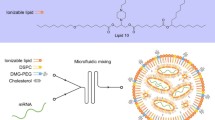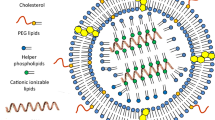Abstract
Human immunodeficiency virus type I (HIV-1) transactivator of transcription (TAT) is encoded by HIV-1. It is a peptide rich in basic amino acids and belongs to the protein transduction domain family. It has been found that HIV-1 TAT and its core peptide segment TAT47–57 play an important role in promoting the cellular uptake of coupled bioactive macromolecules, such as peptides, proteins, oligonucleotides, and drug molecules. HIV-1 TAT can also significantly increase the soluble expression of extrinsic proteins. However, the mechanism behind the cellular uptake of HIV-1 TAT-derived cell-penetrating peptide remains unclear. This review focuses on the research into HIV-1 TAT-derived cell-penetrating peptide over the last years. We briefly discuss TAT’s structural features, functions and applications, the mechanism of its cellular internalization, current challenges, and their possible solutions. At the end of this review, we provide a summary and predict the future research directions and potential applications of HIV-1 TAT when it is used as a cell-penetrating peptide.


Similar content being viewed by others
References
Al Soraj M, He L, Peynshaert K, Cousaert J, Vercauteren D, Braeckmans K, De Smedt SC, Jones AT (2012) siRNA and pharmacological inhibition of endocytic pathways to characterize the differential role of macropinocytosis and the actin cytoskeleton on cellular uptake of dextran and cationic cell penetrating peptides octaarginine (R8) and HIV-Tat. J Control Release 161:132–141
Arya SK, Guo C, Josephs SF, Wong-Staal F (1985) Trans-activator gene of human T-lymphotropic virus type III (HTLV-III). Science 229:69–73
Baoum A, Ovcharenko D, Berkland C (2012) Calcium condensed cell penetrating peptide complexes offer highly efficient, low toxicity gene silencing. Int J Pharm 427:134–142
Brooks H, Lebleu B, Vives E (2005) Tat peptide-mediated cellular delivery: back to basics. Adv Drug Deliv Rev 57:559–577
Cao G, Pei W, Ge H, Liang Q, Luo Y, Sharp FR, Lu A, Ran R, Graham SH, Chen J (2002) In vivo delivery of a Bcl-xL fusion protein containing the TAT protein transduction domain protects against ischemic brain injury and neuronal apoptosis. J Neurosci 22:5423–5431
Chang M, Chou JC, Lee HJ (2005) Cellular internalization of fluorescent proteins via arginine-rich intracellular delivery peptide in plant cells. Plant Cell Physiol 46:482–488
Chugh A, Eudes F (2007) Translocation and nuclear accumulation of monomer and dimer of HIV-1 Tat basic domain in triticale mesophyll protoplasts. Biochim Biophys Acta 1768:419–426
Dayton AI, Sodroski JG, Rosen CA, Goh WC, Haseltine WA (1986) The trans-activator gene of the human T cell lymphotropic virus type III is required for replication. Cell 44:941–947
Derossi D, Joliot AH, Chassaing G, Prochiantz A (1994) The third helix of the Antennapedia homeodomain translocates through biological membranes. J Biol Chem 269:10444–10450
Drin G, Cottin S, Blanc E et al (2003) Studies on the internalization mechanism of cationic cell-penetrating peptides. J Biol Chem 278:31192–31201
Elliott G, O’Hare P (1997) Intercellular trafficking and protein delivery by a herpesvirus structural protein. Cell 88:223–233
Elliott SL, Pye SJ, Schmidt C, Cross SM, Silins SL, Misko IS (1997) Dominant cytotoxic T lymphocyte response to the immediate-early trans-activator protein, BZLF1, in persistent type A or B Epstein-Barr virus infection. J Infect Dis 176:1068–1072
Ezhevsky SA, Nagahara H, Vocero-Akbani AM, Gius DR, Wei MC, Dowdy SF (1997) Hypo-phosphorylation of the retinoblastoma protein (pRb) by cyclin D:Cdk4/6 complexes results in active pRb. PNAS 94:10699–10704
Fischer R, Fotin-Mleczek M, Hufnagel H et al (2005) Break on through to the other side-biophysics and cell biology shed light on cell-penetrating peptides. ChemBioChem 6:2126–2142
Fisher AG, Feinberg MB, Josephs SF et al (1986) The trans-activator gene of HTLV-III is essential for virus replication. Nature 320:367–371
Frankel AD, Pabo CO (1988) Cellular uptake of the tat protein from human immunodeficiency virus. Cell 55:1189–1193
Fretz MM, Koning GA, Mastrobattista E et al (2004) OVCAR-3 cells internalize TAT-peptide modified liposomes by endocytosis. Biochim Biophys Acta 1665:48–56
Green M, Loewenstein PM (1988) Autonomous functional domains of chemically synthesized human immunodeficiency virus tat trans-activator protein. Cell 55:1179–1188
Gump JM, June RK, Dowdy SF (2010) Revised role of glycosaminoglycans in TAT protein transduction domain-mediated cellular transduction. J Biol Chem 285:1500–1507
He HC, Liu ST, Pan JR, Fu R, Chen J, Chen GR, Rao PF (2006) Possible mechanism of transmembrane of TAT-PTD fusion protein. Chin J Biochem Mol Biol 22:704–710
Jiang T, Zhang Z, Zhang Y, Lv H, Zhou J, Li C, Hou L, Zhang Q (2012) Dual-functional liposomes based on pH-responsive cell-penetrating peptide and hyaluronic acid for tumor-targeted anticancer drug delivery. Biomaterials 33:9246–9258
Kamei N, Nielsen EJ, el Khafagy S, Takeda-Morishita M (2013) Noninvasive insulin delivery: the great potential of cell-penetrating peptides. Ther Deliv 4:315–326
Kim D, Jeon C, Kim JH, Kim MS, Yoon CH, Choi IS, Kim SH, Bae YS (2006) Cytoplasmic transduction peptide (CTP): new approach for the delivery of biomolecules into cytoplasm in vitro and in vivo. Exp Cell Res 312:1277–1288
Lin J, Alexander-Katz A (2013) Cell membranes open “doors” for cationic nanoparticles/biomolecules: insights into uptake kinetics. ACS Nano 7:10799–10808
Mae M, Langel U (2006) Cell-penetrating peptides as vectors for peptide, protein and oligonucleotide delivery. Curr Opin Pharmacol 6:509–514
Maiolo JR 3rd, Ottinger EA, Ferrer M (2004) Specific redistribution of cell-penetrating peptides from endosomes to the cytoplasm and nucleus upon laser illumination. J Am Chem Soc 126:15376–15377
Milletti F (2012) Cell-penetrating peptides: classes, origin, and current landscape. Drug Discov Today 17:850–860
Nakase I, Niwa M, Takeuchi T et al (2004) Cellular uptake of arginine-rich peptides: roles for macropinocytosis and actin rearrangement. Mol Ther 10:1011–1022
Nasrollahi SA, Taghibiglou C, Azizi E, Farboud ES (2012) Cell-penetrating peptides as a novel transdermal drug delivery system. Chem Biol Drug Des 80:639–646
Ogris M, Carlisle RC, Bettinger T, Seymour LW (2001) Melittin enables efficient vesicular escape and enhanced nuclear access of nonviral gene delivery vectors. J Biol Chem 276:47550–47555
Qin Y, Wang GX, Liu F (2014) Research and application of a new macro molecular nano-carrier—cell penetrating peptides. Chin J Cell Biol 36:1169–1177
Richard JP, Melikov K, Vives E et al (2003) Cell-penetrating peptides. A reevaluation of the mechanism of cellular uptake. J Biol Chem 278:585–590
Richard JP, Melikov K, Brooks H et al (2005) Cellular uptake of unconjugated TAT peptide involves clathrin-dependent endocytosis and heparan sulfate receptors. J Biol Chem 280:15300–15306
Rothbard J, Garlington S, Lin Q, Kirschberg T, Kreider E, McGrane PL, Wender PA, Khavari PA (2000) Conjugation of arginine oligomers to cyclosporin A facilitates topical delivery and inhibition of inflammation. Nat Med 6:1253–1257
Saika H, Toki S (2010) Mature seed-derived callus of the model indica rice variety Kasalath is highly competent in Agrobacterium-mediated transformation. Plant Cell Rep 29:1351–1364
Santra S, Yang H, Stanley JT, Holloway PH, Moudgil BM, Walter G, Mericle RA (2005) Rapid and effective labeling of brain tissue using TAT-conjugated CdS:Mn/ZnS quantum dots. Chem Commun 25:3144–3146
Schwarze SR, Dowdy SF (2000) In vivo protein transduction: intracellular delivery of biologically active proteins, compounds and DNA. Trends Pharmacol Sci 21:45–48
Schwarze SR, Ho A, Vocero-Akbani A, Dowdy SF (1999) In vivo protein transduction: delivery of a biologically active protein into the mouse. Science 285:1569–1572
Silhol M, Tyagi M, Giacca M, Lebleu B, Vives E (2002) Different mechanisms for cellular internalization of the HIV-1 Tat-derived cell penetrating peptide and recombinant proteins fused to Tat. Eur J Biochem 269:494–501
Subrizi A, Tuominen E, Bunker A et al (2012) Tat(48–60) peptide amino acid sequence is not unique in its cell penetrating properties and cell-surface glycosaminoglycans inhibit its cellular uptake. J Control Release 158:277–285
Suzuki R, Oda Y, Utoguchi N, Namai E, Taira Y, Okada N, Kadowaki N, Kodama T, Tachibana K, Maruyama K (2009) A novel strategy utilizing ultrasound for antigen delivery in dendritic cell-based cancer immunotherapy. J Control Release 133:198–205
Tan M, Lan KH, Yao J, Lu CH, Sun M, Neal CL, Lu J, Yu D (2006) Selective inhibition of ErbB2-overexpressing breast cancer in vivo by a novel TAT-based ErbB2-targeting signal transducers and activators of transcription 3-blocking peptide. Cancer Res 66:3764–3772
Tunnemann G, Martin RM, Haupt S, Patsch C, Edenhofer F, Cardoso MC (2006) Cargo-dependent mode of uptake and bioavailability of TAT-containing proteins and peptides in living cells. Faseb J 20:1775–1784
Tyagi M, Rusnati M, Presta M, Giacca M (2001) Internalization of HIV-1 tat requires cell surface heparan sulfate proteoglycans. J Biol Chem 276:3254–3261
Violini S, Sharma V, Prior JL, Dyszlewski M, Piwnica-Worms D (2002) Evidence for a plasma membrane-mediated permeability barrier to Tat basic domain in well-differentiated epithelial cells: lack of correlation with heparan sulfate. Biochemistry 41:12652–12661
Vives E, Brodin P, Lebleu B (1997) A truncated HIV-1 Tat protein basic domain rapidly translocates through the plasma membrane and accumulates in the cell nucleus. J Biol Chem 272:16010–16017
Vocero-Akbani AM, Heyden NV, Lissy NA, Ratner L, Dowdy SF (1999) Killing HIV-infected cells by transduction with an HIV protease-activated caspase-3 protein. Nat Med 5:29–33
Wadia JS, Dowdy SF (2005) Transmembrane delivery of protein and peptide drugs by TAT-mediated transduction in the treatment of cancer. Adv Drug Deliv Rev 57:579–596
Wadia JS, Stan RV, Dowdy SF (2004) Transducible TAT-HA fusogenic peptide enhances escape of TAT-fusion proteins after lipid raft macropinocytosis. Nat Med 10:310–315
Wattiaux R, Gentinne F, Jadot M, Dubois F, Wattiaux-De Coninck S (1993) Chloroquine allows to distinguish between hepatocyte lysosomes and sinusoidal cell lysosomes. Biochem Biophys Res Commun 190:808–813
Wu YH, Zhang CG (2010) Research progress of HIV-1 TAT protein transduction peptide. China Biotechnology 30:66–73
Wu Y, Ren C, Gao Y, Hou B, Chen T, Zhang C (2010) A novel method for promoting heterologous protein expression in Escherichia coli by fusion with the HIV-1 TAT core domain. Amino Acids 39:811–820
Yamano S, Dai J, Yuvienco C et al (2011) Modified Tat peptide with cationic lipids enhances gene transfection efficiency via temperature-dependent and caveolae-mediated endocytosis. J Control Release 152:278–285
Yamano S, Dai J, Hanatani S et al (2014) Long-term efficient gene delivery using polyethylenimine with modified Tat peptide. Biomaterials 35:1705–1715
Zhang LX, Zhang SX (2008) Mechanism of cell-penetrating peptides-mediated internalization and its application. Chin J Biochem Mol Biol 24:1092–1096
Acknowledgements
We sincerely thank all of the participants involved in this project. This work was funded by the National Natural Science Foundation of China (81373491 and 81302750). This work was also supported by Xiangya Hospital of Central South University, Department of Pharmacy of Central South University, Institute of Clinical Pharmacology of Central South University, and Institute of Hospital Pharmacy of Central South University. The authors of this manuscript confirm that this article content has no conflict of interest.
Author information
Authors and Affiliations
Corresponding author
Rights and permissions
About this article
Cite this article
Zou, L., Peng, Q., Wang, P. et al. Progress in Research and Application of HIV-1 TAT-Derived Cell-Penetrating Peptide. J Membrane Biol 250, 115–122 (2017). https://doi.org/10.1007/s00232-016-9940-z
Received:
Accepted:
Published:
Issue Date:
DOI: https://doi.org/10.1007/s00232-016-9940-z




